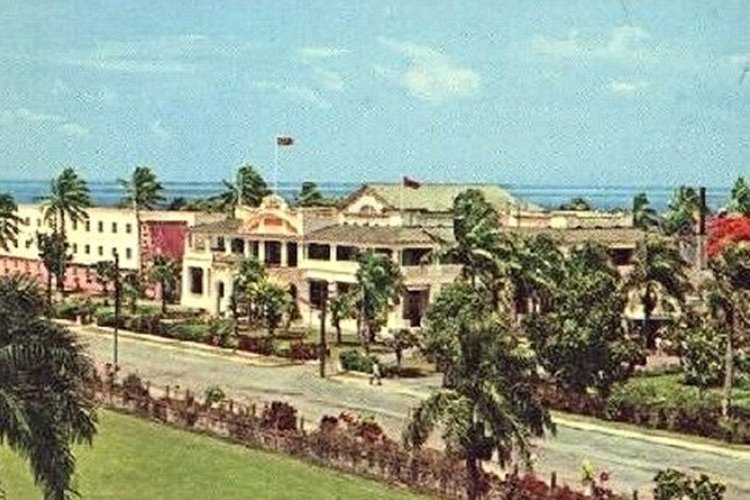
Part Two
This is the second part in a series of blogs by Norwegian anthropologist Solrun Williksen. These next few excerpts cover the glorious history of the GPH
The Grand Pacific Hotel was built in 1914 and was hailed as a masterpiece of colonial architecture and a seat of splendid receptions, balls and dinners. It had 60 rooms and a hall with huge cane chairs, where one could easily envisage Somerset Maugham or James Michener in conversation with an unknown traveler.
All the rooms had access to wide verandahs that surrounded the building and the bathrooms were of the finest standard. The grounds around the hotel were used for elegant garden parties. The hotel was built by the Union Steam Ship Company and all the fittings and cutlery were the same style as on the ships. The intention was to use the hotel as a staging point for shipping services to the North and South of the Pacific.
War the hotel was used by the American forces. James Michener, who was a navy soldier at the time, came back to Fiji after the war to stay in the hotel again, this time as a famous writer. His stay at the hotel might be likened to a pilgrimage into the past. The hotel had played a part in an important period of his life. During the war the distinguished building may have provided an anchorage to many young persons.
But buildings and places may also be alienating. Could one get the same feeling of attachment and nostalgia towards a building like the old Travelodge (now the Holiday Inn)?

The French anthropologist Marc Auge describes what he calls “non-place”. This is a concept catching a trend in the modem/post-modem world where people travel and spend an increasing amount of time in anonymous places like super-markeds, shopping malls, airports, in front of cumputers and in hotels.
Auge says about non-places that they are “curious places which are both everywhere and nowhere” (Auge cited in Sheldrake 2001:8). This may indeed be said about many chains of hotels, The Courtesy Inn’s, the Hilton’s, the Sheraton’s and the Travelodge’s. This never could, and even now cannot, be said about the Grand Pacific Hotel. The hotel definitely was a place and not only is place “a space in which vows have been exchanged, promises have been made, and demands have been issued” (Sheldrake 2001:7), but it offers a sense of history and identity.

The restoration got delayed. In August 1995 a new message in the Fiji Times: “Grand Pacific to get a facelift at last“. It was illustrated with a picture of the still respectable building (seen from a little distance) and it said that work would begin next month. The architect said that the roofs were leaking badly and that the building had been subjected to vandalism. He confirmed that the building would be restored to its Edwardian structural design (The Fiji Times 30.8.1995).
Another article, “Why a grand hotel needs new life” brought back memories: “It was on the balcony of the GPH that the young Queen Elizabeth II faced her Fiji subjects for the first time in 1953 and revealed in that historic show of affection and allegiance to the British monarchy“. It was hoped, the article emphasized, that the grand project would restore national pride. Very little happened. In 1997 the same Malcolm Reid who had made promises in 1995 was unavailable to comment when asked about the delay. The National Trust of Fiji was now expressing concern about the derelict state of the building. The director Birandra Singh “said he was disappointed with the state of the building because it was an important landmark” (The Fiji Times 11.7.97).
Architects Pacific who had taken on the construction was still waiting to carry out the work. During the talks (“high powered talks” the Fiji Times called it, 11.7.1997) the American ambassador to Fiji, Mr. Gevirts, expressed the embassy’s will to facilitate a take over of the hotel by the Southern Pacific Hotels, a subsidiary of Hyatt in the U.S. According to him the Hyatt intended to integrate the Travelodge Hotel (now the Holiday Inn) with the GPH. The general manager of the Travelodge, Mr. Brian Tinworth, responded to this by saying that “the Grand Pacific Hotel design concept would be made to flow through the existing Travelodge “(The Fiji Times 21.2.97 p 8).
The restoration work did not start. The Fiji Government seemed by this time to begin to regret that they let the Nauru Phosphate Trust take over, as Nauru was losing its wealth rapidly. Fiji was still struggling to recover from the military coup in 1987 and no wonder the priority was not at the time given to the Grand Pacific Hotel.
During the many years that the GPH has been in a state of decline many official instances and persons have come out with promises and plans. In February 1995 a brief note in the Fiji Times quoted Mr. Huggett, the managing director of the architectural firm Architects Pacific; “I am very much optimistic that the project would go ahead in the coming months and have no doubts about it” (The Fiji Times 20.2.1995) Two months later the promising message ran “A $29 million facelift for Grand Pacific”. The upgrading was planned to begin in about six weeks”.
Malcolm Reid, who was the spokesman of the owner, the Nauru Phosphate Royalties Trust promised that not oniy would the hotel retain its historic name, but it would also be redeveloped to “four star standard with two presidential suites”. Further, he said that the new wings of the hotel would be “built in a style similar to that of the 7existing building to retain its colonial charm” (The Fiji Times 8.4.1995). In a political sense Fiji had said a definite farewell to its “colonial charm” eight years earlier when, in a military coup conducted by colonel Sitiveni Rabuka, it declared itself a “republic.
The above photo courtesy of the Fiji Museum, is an artist’s rendition of the yet to be reconstructed GPH
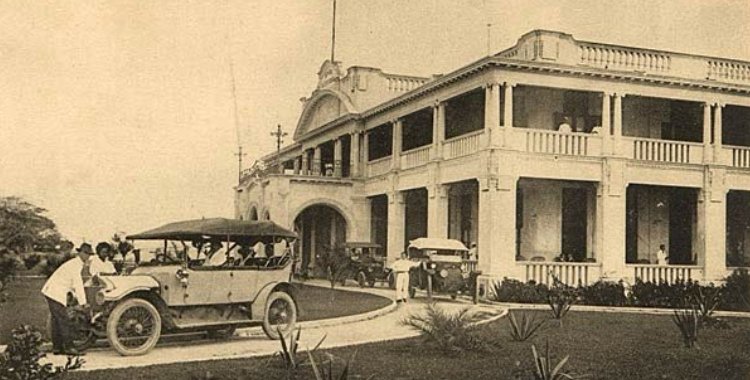
Fiji’s Greatest Hotel: Remembrances of the Grand Pacific Hotel – Part 3
Part Three This is the third is in a series of blogs by Norwegian anthropologist Solrun Williksen. These next few excerpts cover the glorious history of the GPH It was not true as stated by Finance Minister Jim Ah Koy in 1998 that the Grand Pacific had been “an eyesore for the last 20 years”. But […]
About Grand Pacific Hotel
Once established as the standard of luxury that was fit for royalty; now more than 100 years later, the Grand Pacific Hotel remains true to the ideals of delivering the best of old world charms, South Pacific hospitality and contemporary service. Website












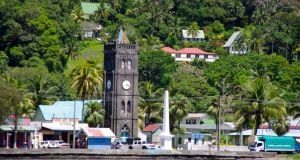
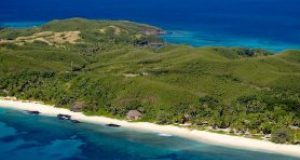



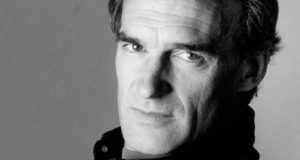





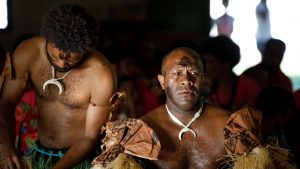






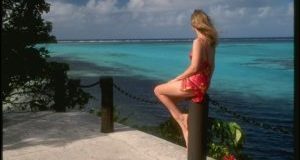






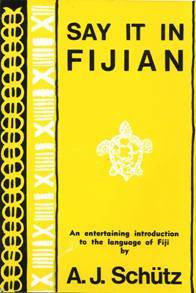


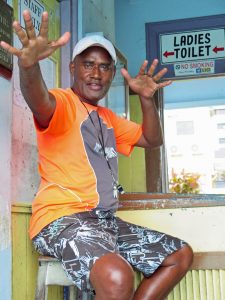
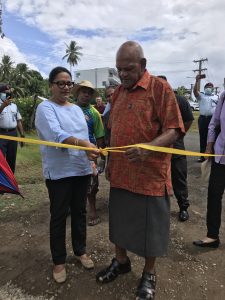



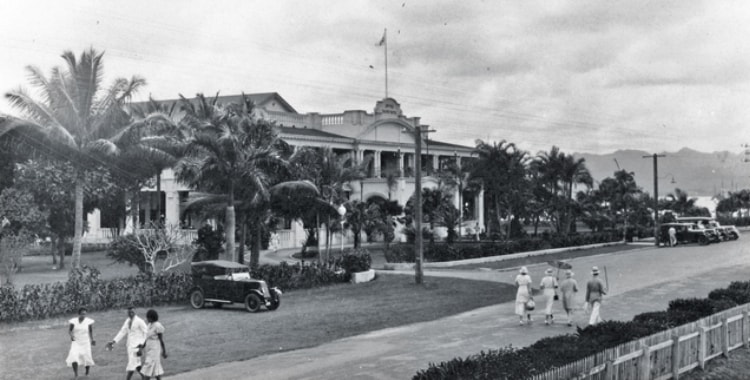
Leave a reply